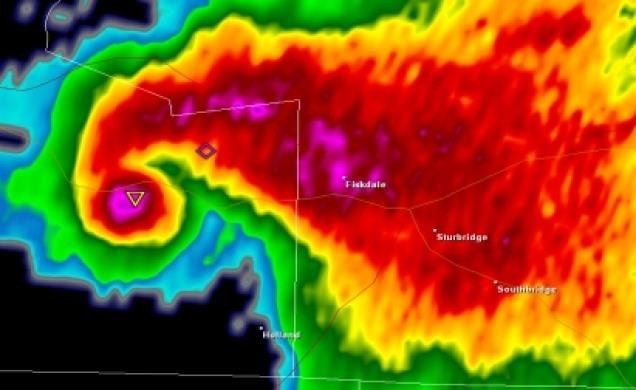-
Posts
77,947 -
Joined
-
Last visited
Content Type
Profiles
Blogs
Forums
American Weather
Media Demo
Store
Gallery
Everything posted by weatherwiz
-

The last hurrah? Putting all the eggs in the Tuesday 3/14 basket
weatherwiz replied to Ginx snewx's topic in New England
All in all I think the ensembles are going a great job. They're doing what they're supposed to do, help to eliminate or reduce spread and that's what we're seeing. Obviously, given the time of year, there are alot more challenges to contend with, especially outside of the interior and elevation. The details which will matter with that, however, likely aren't going to be resolved with the ensembles. This is where consistency of OP runs (mode-to-model and run-to-run) will become extremely important as we get to the 72-84 hour mark. -

The last hurrah? Putting all the eggs in the Tuesday 3/14 basket
weatherwiz replied to Ginx snewx's topic in New England
True, but all that does at this stage is keep expectations at bay and just illustrates that subtle differences regarding the timing of phasing will have a huge impact overall. 18z or 0z could tick more east with the majority of members...that wouldn't or shouldn't change any thinking yet...we're still a bit too far out in time. -

The last hurrah? Putting all the eggs in the Tuesday 3/14 basket
weatherwiz replied to Ginx snewx's topic in New England
ENS still show members which are very solid and great hits. Yes it has members which are certainly west and inland, but right now, any scenario of big hit vs. mostly rain is in play -

The last hurrah? Putting all the eggs in the Tuesday 3/14 basket
weatherwiz replied to Ginx snewx's topic in New England
In that regard, yes that is definitely a concern, but on the other hand, if this materializes like the 12z Euro, it wouldn't be much of a concern. Obviously (outside of the elevations and interior) we're looking for near-perfection. -

The last hurrah? Putting all the eggs in the Tuesday 3/14 basket
weatherwiz replied to Ginx snewx's topic in New England
I'm not concerned with the EPS, at least at this stage. If anything, we now have pinned this down to a very narrow corridor of track/development. With that, it's all just going to come down to precise timing of when the phasing occurs. I suspect we are going to be walking a fine line until probably 24-hours out b/c a very slight difference (slightly earlier vs. slightly later) is going to mean the world (for many). -

The last hurrah? Putting all the eggs in the Tuesday 3/14 basket
weatherwiz replied to Ginx snewx's topic in New England
need to save some trees for the derechos this summer -

The last hurrah? Putting all the eggs in the Tuesday 3/14 basket
weatherwiz replied to Ginx snewx's topic in New England
Just imagine this. I mean there would certainly be a subsidence screw zone but given the evolution the chances of the CCB traversing the majority of the region would be high and this would likely sit and pivot somewhere...that's when you're going to be talking about the potential for some obscene totals. -

The last hurrah? Putting all the eggs in the Tuesday 3/14 basket
weatherwiz replied to Ginx snewx's topic in New England
It's fun watching the evolution of 850/925 temps in the 12-hour period. You can easily spot where the CCB is -

The last hurrah? Putting all the eggs in the Tuesday 3/14 basket
weatherwiz replied to Ginx snewx's topic in New England
That is an absolute crush job for them. The upslope would be insane. Still some work to do elsewhere, but not out of the cards yet. -

The last hurrah? Putting all the eggs in the Tuesday 3/14 basket
weatherwiz replied to Ginx snewx's topic in New England
Very nice -

The last hurrah? Putting all the eggs in the Tuesday 3/14 basket
weatherwiz replied to Ginx snewx's topic in New England
At least we won't have to deal with this uncertainty once severe weather season comes. It's cold front approaches, we get severe weather, boom...easy peasy -

The last hurrah? Putting all the eggs in the Tuesday 3/14 basket
weatherwiz replied to Ginx snewx's topic in New England
If I had to lean in any direction right now it's that we will eventually see a stronger consensus towards the southern vort outrunning the northern vort. There seem to be some decent signals that would favor the northern vort slowing down a bit. -

The last hurrah? Putting all the eggs in the Tuesday 3/14 basket
weatherwiz replied to Ginx snewx's topic in New England
Precisely why it's not worth getting all emotional from run-to-run. This gets said all the time at this stage, but this (especially this type of scenario) is where ensembles hold most weight. Like you said, there are a ton of different combos we can see and an OP is just going to show one of those combos and that doesn't necessarily mean it's holds the most weight. -

The last hurrah? Putting all the eggs in the Tuesday 3/14 basket
weatherwiz replied to Ginx snewx's topic in New England
I wouldn't worry too much with what models have for 2m temps verbatim, no matter the solution and forgot the garbage snowfall maps. The degree of upper-level dynamics which will be in place will support the potential for rapid deepening and cyclogenesis (obviously it's a matter of getting everything to phase and align). In the event we see a favorable phase, dynamics will then take over. Combination of increasing llvl convergence and ulvl divergence along will work to cool the profile and if you can get a favorable low track/placement you'll even increase the odds for a cold enough profile down to the coast. But the one thing models will struggle with is the 2M temperatures in these scenarios. Remember, they're going to want to scale towards climo in a sense. but if you were to look at 2M temps at this stage and see 34-35 (even in the most explosive runs), I would be willing to bet at verification time the temps are more 32-33. -

The last hurrah? Putting all the eggs in the Tuesday 3/14 basket
weatherwiz replied to Ginx snewx's topic in New England
These are not necessarily true. -

The last hurrah? Putting all the eggs in the Tuesday 3/14 basket
weatherwiz replied to Ginx snewx's topic in New England
All that matters now is how each model (and subsequent runs) continue to handle the evolution of the northern stream and southern stream. All you're looking for is consistency regarding evolution and trying to eliminate scenarios and hone in on as few scenarios as possible. the verbatim details of temp profiles, p-type, QPF, etc. are irrelevant at this stage. -

The last hurrah? Putting all the eggs in the Tuesday 3/14 basket
weatherwiz replied to Ginx snewx's topic in New England
Focusing on just the southern stream here, but I wonder if one big key is how convective active it becomes along and ahead of the front Saturday and Sunday within the Tennessee Valley/Southeast. Both GFS and Euro are quite active, however, the Euro is more robust. Looks like with this more robust activity and a stronger southern vort. it helps to pump up heights off the EC and leads to the better phase interaction between the two streams with better digging of the northern vort -

The last hurrah? Putting all the eggs in the Tuesday 3/14 basket
weatherwiz replied to Ginx snewx's topic in New England
As we get closer, we could probably really start focusing on the potential for dynamic cooling to negate a subpar initial airmass. In these solutions were seeing airmass wouldn't be a huge concern as the degree of dynamic cooling would probably be pretty significant. -

The last hurrah? Putting all the eggs in the Tuesday 3/14 basket
weatherwiz replied to Ginx snewx's topic in New England
You always gets leery of stall scenarios this far out, but the H5 evolution, at least on the Euro, would support that idea. Would really like to see some better blocking support to truly get excited for that idea though. -

The last hurrah? Putting all the eggs in the Tuesday 3/14 basket
weatherwiz replied to Ginx snewx's topic in New England
I am praying the PAC can finally give us an assist. The pattern evolution across the PAC becomes quite complex with a major split flow developing. Looks like the shortwave which enhances the PNA ridge across the western comes all the way from Asia and amplifies as it digs south through the Gulf of Alaska...or slightly east. One thing that is great to see though or there isn't a train of shortwave energy within the northern stream across the CONUS over the weekend. Also, I would watch for confluence to arise on future model runs with PV lobe nearby -

The last hurrah? Putting all the eggs in the Tuesday 3/14 basket
weatherwiz replied to Ginx snewx's topic in New England
Yeah my assessment wasn't the best. I was looking at 850 temp anomalies and also was looking at bit ahead of when things would be going. -

The last hurrah? Putting all the eggs in the Tuesday 3/14 basket
weatherwiz replied to Ginx snewx's topic in New England
At least we'll have a cold llvl airmass with respect to climo. You just hope that we can minimize diurnal warmth as much as possible. Coastal locations will be quite the challenge obviously. -

The last hurrah? Putting all the eggs in the Tuesday 3/14 basket
weatherwiz replied to Ginx snewx's topic in New England
This is certainly the type of storm potential where going crazy over model run-to-model run is not worth it. These setups which are highly dependent on phasing are extremely fickle. The only two features which really matter now are the handling of the pieces of energy involved. Just because some successive runs at this stage don't show a storm doesn't mean it's a trend and just b/c successive runs show a storm doesn't mean a storm. -
Getting pretty intrigued with Saturday. Obviously there are questions regarding the track, but the upper-level dynamics seem much more impressive then the past few systems with tracked east-southeast across the Great Lakes. Much stronger vort which remains closed later and you have the jet streak beginning to round the base of the trough moving into the Northeast, indicating potential for rapid amplification or strengthening. I wonder though if the southern track will pose the highest likelihood for a more intense system? Sure that will suck more most, but would be a beauty to watch unfold.
-
Summer is so close but so far





